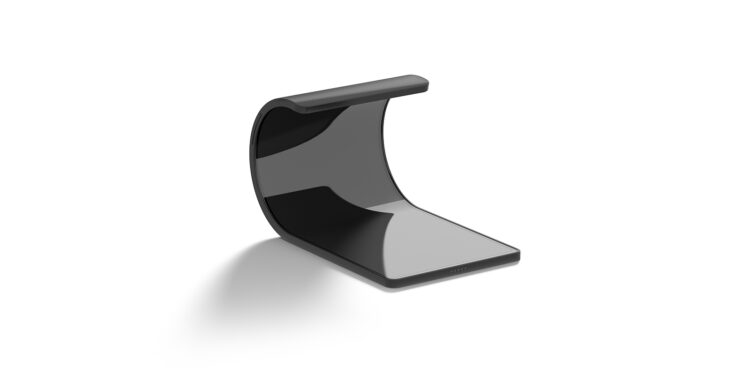Apple is apparently working hard on its first foldable device and is taking an important step in the choice of materials. According to a report by The Elec, the company has secured suppliers for ultra-thin glass (UTG). This material is expected to play a crucial role in development, as it makes foldable displays more resilient and durable. While competitors already offer foldable smartphones, Apple is relying on a well-thought-out strategy with high-quality materials and new production methods. In particular, the choice of the Chinese company Lens Technology as the main supplier indicates that Apple is preparing extensively to enter the market for foldable devices.
Foldable smartphones are no longer a novelty. Samsung, Huawei and other manufacturers have already launched several models. Apple, on the other hand, has taken its time to introduce such a device. The reason for this could be the search for a stable and durable solution. While many existing foldable smartphones use plastic displays, Apple seems to be relying on ultra-thin glass. This material offers greater scratch resistance and a better user experience. However, producing UTG is a major challenge, which could explain why Apple is only now seriously tackling this market.
Apple secures UTG supplier for the foldable device
A central part of Apple's strategy is choosing the right suppliers. Report According to the report, Chinese company Lens Technology will serve as the main supplier for UTG and will receive about 70% of Apple's orders. The raw materials for the glass will come from US company Corning, which is known for its high-quality glass production. Lens Technology has proven to be a leader in mass production of UTG and has special techniques for strengthening the glass. The company's ability to minimize side cracks after cutting is particularly noteworthy. In addition, Lens Technology has technologies for etching glass, which could be crucial for producing particularly fine and durable displays. According to the report, the supplier plans to expand its production capacity in 2025 to be prepared for the expected orders from Apple. The company's first foldable device could therefore appear in the second half of 2026 or the following year.
Apple's strategy: thin but robust
Apple's design approach for the foldable device appears to be different from that of other manufacturers. Instead of making the entire display as thin as possible, Apple focuses on thinning only the middle part of the UTG. This keeps the glass more stable overall while maintaining flexibility in the critical area. This strategy could be a decisive advantage, as many current foldable smartphones struggle with problems such as bending or cracking in the display. Apple's solution could thus ensure a longer lifespan of the screen and improve the overall durability of the device.
Possible alternatives: South Korean suppliers
In addition to Lens Technology, there are other companies that Apple may have in mind for UTG production. The South Korean companies Dowoo Insys and UTI are considered possible secondary suppliers. What is particularly interesting is that Dowoo Insys secured two patents in October 2024 that relate to thinning the middle glass area. One patent shows similarities to an Apple patent application from the same period. It is possible that Apple is considering multiple suppliers to avoid bottlenecks or to test different technologies.
Samsung Display as a possible panel supplier
While Apple relies on Lens Technology and Corning for the glass, the company could rely on Samsung Display for the actual foldable display. Samsung is currently the leader in the production of foldable OLED panels and already supplies numerous manufacturers. If Apple does indeed choose Samsung as its exclusive supplier, it would mean that the foldable iPhone or another foldable device would be based on proven technology. Samsung has gained a lot of experience with foldable displays in recent years and could supply Apple with high-quality panels.
When will Apple's first foldable device be released?
Several analysts, including Ming-Chi Kuo, Jeff Pu, The Information and the Wall Street Journal, expect the launch of Apple's first foldable device - an iPhone - in the second half of 2026 or early 2027. This timeline fits with current developments, as Apple and its suppliers appear to be gradually ramping up their production capacities. If the company maintains its strategy, the foldable device may not come to market until the technology is mature enough to meet Apple's quality standards.
Apple follows the usual path of perfection
Apple is unlikely to rush into its first foldable device. Instead, the company is relying on tried and tested strategies: high-quality materials, innovative production methods and close cooperation with leading suppliers. The choice of Lens Technology and Corning for the UTG, the possible second suppliers in South Korea and the exclusive partnership with Samsung Display show that Apple is intensively engaging with the new technology. It remains to be seen when the first foldable iPhone or another foldable Apple device will actually come onto the market. However, the information so far suggests that Apple is pursuing a long-term and well-thought-out plan. (Photo by alexandrbognat / Bigstockphoto)
- When will Apple release a foldable iPhone, iPad & MacBook?
- iPhone Fold: What's really behind the current leaks





